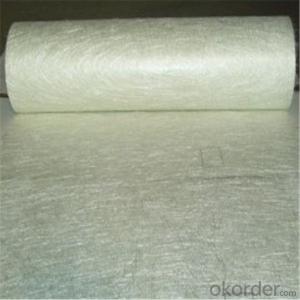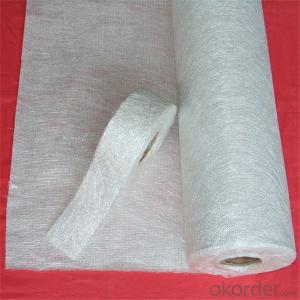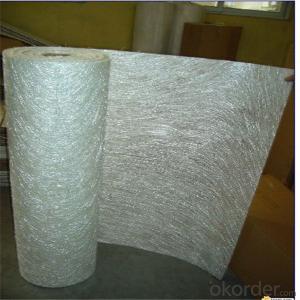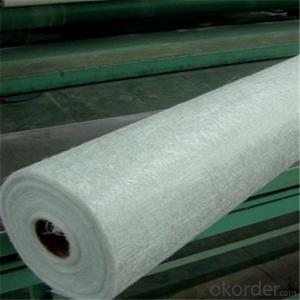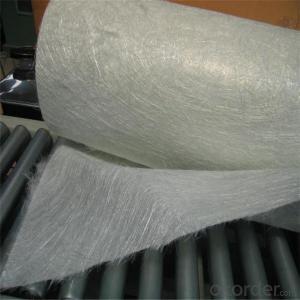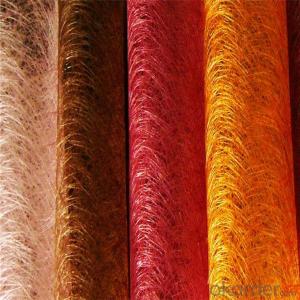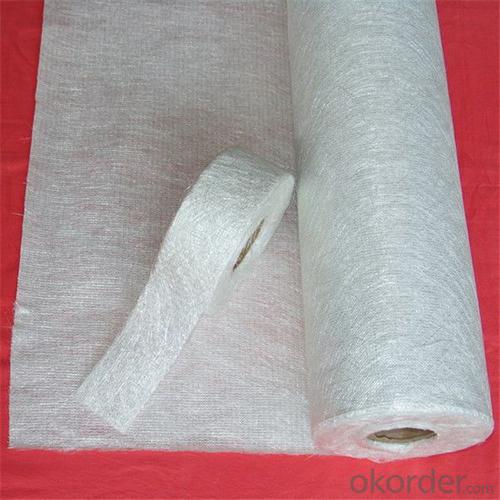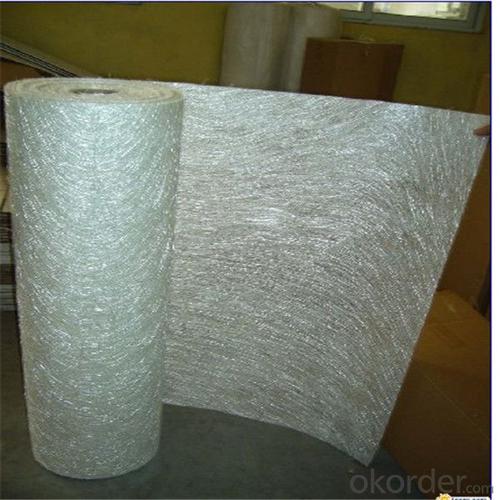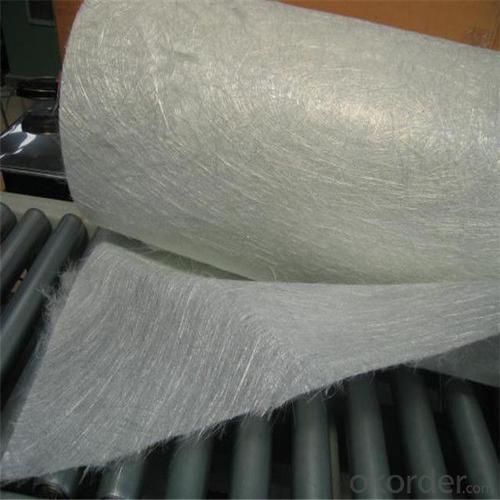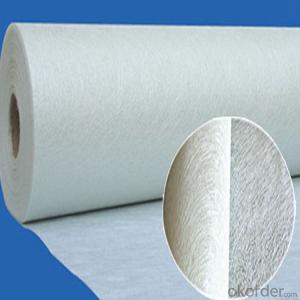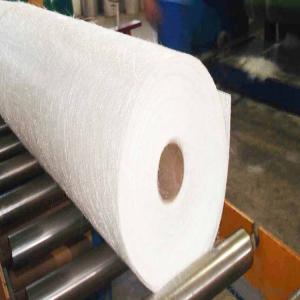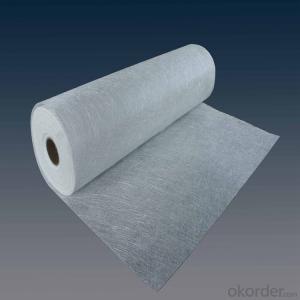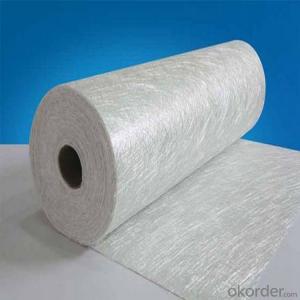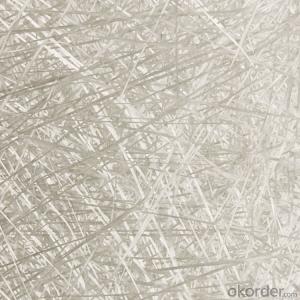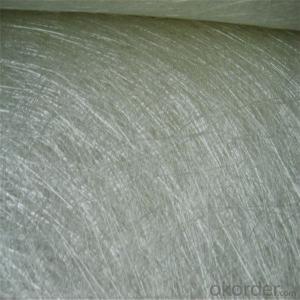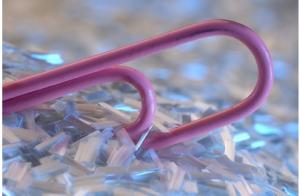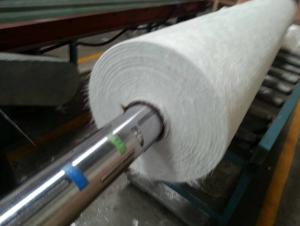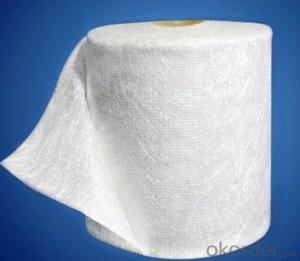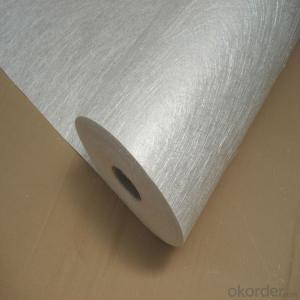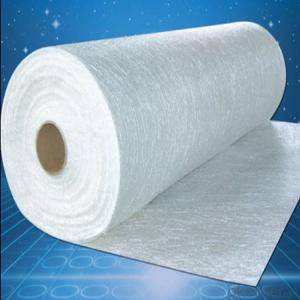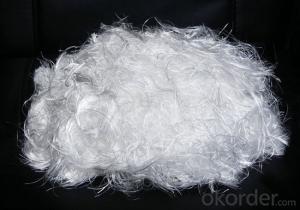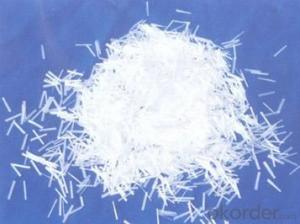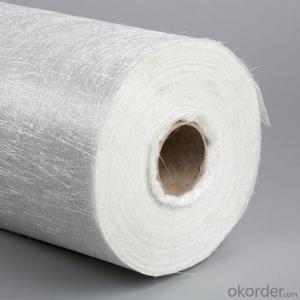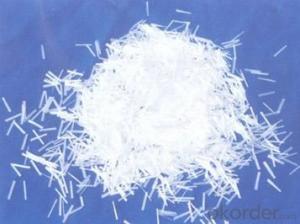Epoxy Resin on Fiberglass Chopped Strand Easy Operation Building Materials Mat
- Loading Port:
- Tianjin
- Payment Terms:
- TT OR LC
- Min Order Qty:
- 100 m.t.
- Supply Capability:
- 20000 m.t./month
OKorder Service Pledge
OKorder Financial Service
You Might Also Like
Quick Details
| Technique: | Chopped Strand Fiberglass Mat (CSM) | Dimensions: | according to customer's request | Mat Type: | Stitch Bonding Chop Mat |
| Fiberglass Type: | E-Glass | Softness: | middle | Place of Origin: | Jiangxi, China (Mainland) |
| Brand Name: | cnbm | Model Number: | CSMEP100,CSMEP120,CSMEP200,etc | Product: | Cooling Tower Building Glass Fiber Fiberglass Chopped Strand Mat(csm) |
| Color: | White | Width: | 1040mm,1250mm,ect. | Area weight: | 225-900g/m2 |
| Application: | filament winding,panpel,ect |
Packaging & Delivery
| Packaging Details: | Each roll in one polybag then to an export carton. |
| Delivery Detail: | Within 18 days after confirm order |
Fiberglass Chopped strand mat
Powder Strand Mats Product Features:
1) Uniform density ensures consistent fiberglass content and mechanical properties of the composites products.
2)Uniform powder distribution ensures good mat integrity, little loose fibers and small roll diameter.
3) Excellent flexibility ensures good mold ability with no spring back at sharp angles.
4)Fast and consistent wet-out speed in resins and rapid air lease reduce resin consumption and production cost and enhances productivity and mechanical properties of the end products.
5)The composite products have high dry and wet tensile strength and good transparency.
Picture
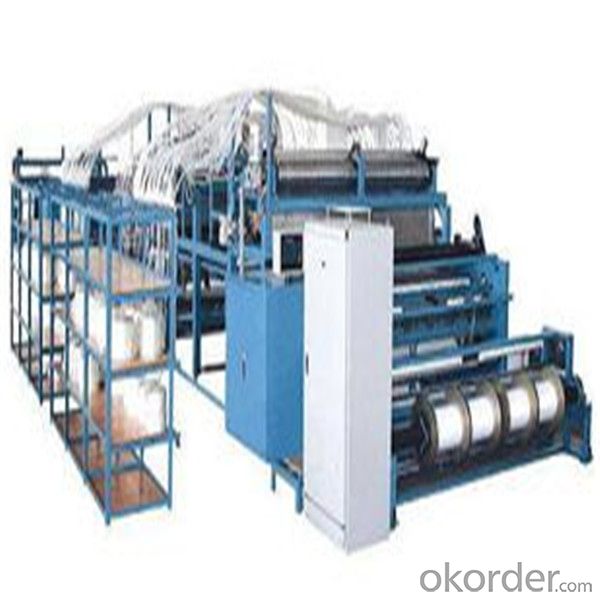
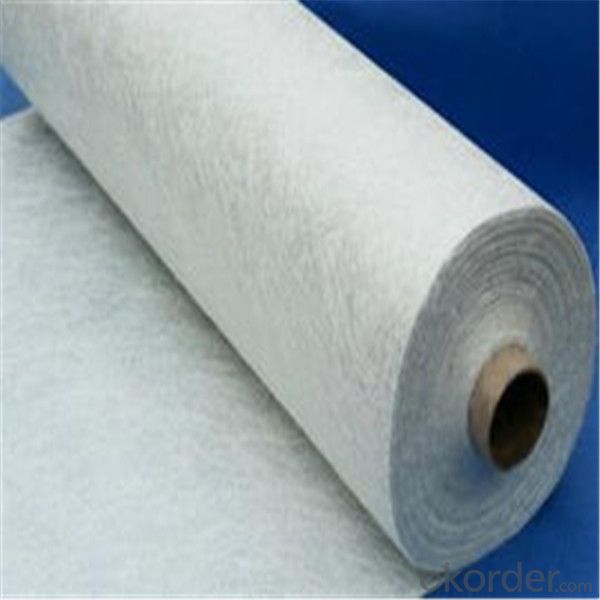
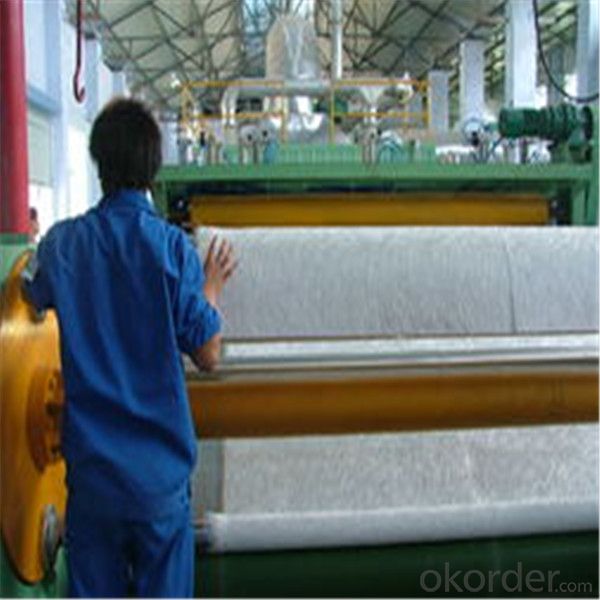
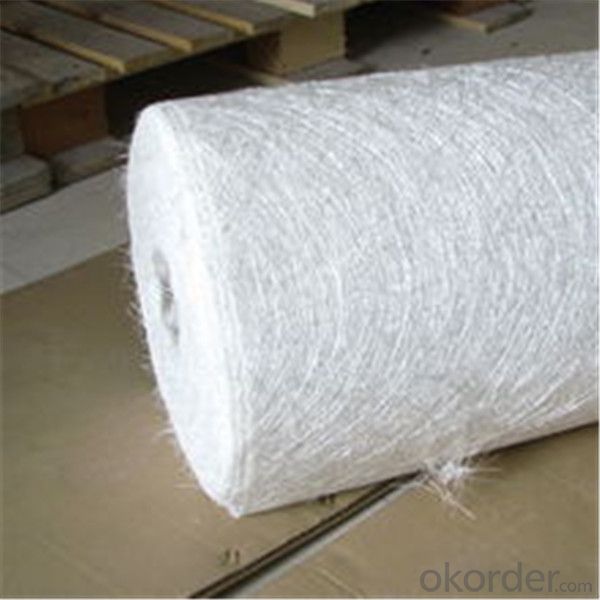
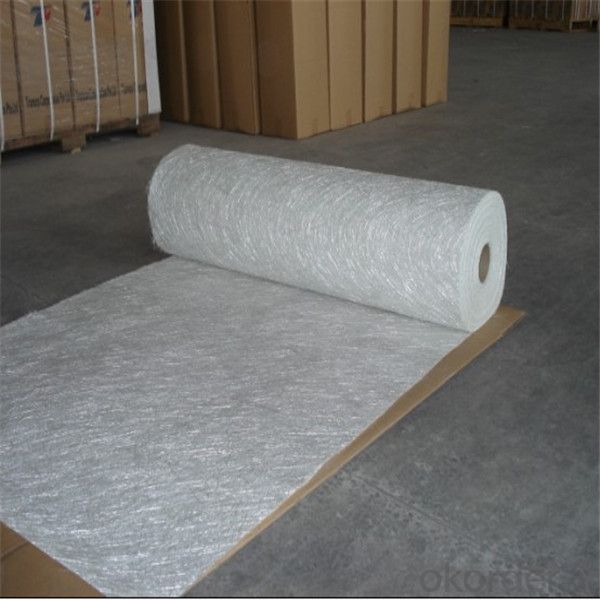
- Q: Is fiberglass chopped strand compatible with different manufacturing processes?
- Yes, fiberglass chopped strand is compatible with various manufacturing processes. It can be used in processes such as compression molding, injection molding, pultrusion, and filament winding, among others. Its versatility and ability to be easily incorporated into different manufacturing methods make it a popular choice in various industries.
- Q: Can fiberglass chopped strand be used in marine applications?
- Yes, fiberglass chopped strand can be used in marine applications. It is commonly used in boatbuilding and other marine structures due to its excellent strength, durability, and resistance to water and corrosion.
- Q: What are the different sizes available for fiberglass chopped strand?
- Fiberglass chopped strand is available in various sizes ranging from 1/16 inch (1.6 mm) to 1/2 inch (12.7 mm) in length.
- Q: Can fiberglass chopped strand be used in the production of wind turbine towers?
- Indeed, the utilization of fiberglass chopped strand is viable for constructing wind turbine towers. This specific reinforcement material comprises short strands of fiberglass. Its primary application lies in the manufacturing of composite materials, such as fiberglass-reinforced plastic (FRP) or fiber-reinforced polymer (FRP) composites. Composite materials are often employed in constructing wind turbine towers due to their lightweight nature and impressive strength-to-weight ratio. These materials possess the necessary rigidity and durability to endure constant exposure to wind and other environmental factors. When it comes to the production of wind turbine towers, fiberglass chopped strand plays a crucial role in enhancing the overall structural integrity of the composite material. To create a robust and long-lasting composite, the chopped strands are typically blended with a resin matrix, such as epoxy or polyester. The integration of fiberglass chopped strand adds further strength and stiffness to the composite, ensuring the wind turbine tower can withstand the forces exerted by strong winds and support the weight of the turbine blades. Additionally, it helps prevent cracking or delamination of the composite material, guaranteeing the wind turbine tower's longevity and reliability. In summary, fiberglass chopped strand is an appropriate material for incorporating into the construction of wind turbine towers. Its reinforcing properties and compatibility with composite materials make it an ideal choice for developing sturdy and durable structures capable of enduring the harsh conditions within wind turbine environments.
- Q: Can fiberglass chopped strand be used in aerospace interior components?
- Yes, fiberglass chopped strand can be used in aerospace interior components. It is a lightweight and durable material that meets the stringent safety and performance requirements of the aerospace industry. It can be used for various applications such as insulation, paneling, and structural components.
- Q: Can fiberglass chopped strand be used for reinforcing plastic parts?
- Indeed, fiberglass chopped strand has the capability to reinforce plastic parts. Comprised of small fibers that are randomly oriented, fiberglass chopped strand is commonly mixed with resin to create a composite material. This composite material possesses impressive mechanical properties, as it is both strong and lightweight, rendering it ideal for reinforcement purposes in plastic parts. During the molding process, the chopped strands are typically incorporated into the plastic resin, resulting in a fortified plastic part that exhibits heightened durability and resistance against impact or load-bearing forces. Moreover, fiberglass chopped strand has the ability to enhance the dimensional stability of plastic parts and provide increased resistance to temperature fluctuations. All in all, the utilization of fiberglass chopped strand for the reinforcement of plastic parts can substantially augment their strength and overall performance.
- Q: Can fiberglass chopped strand be used in electrical insulation coatings?
- Yes, fiberglass chopped strand can be used in electrical insulation coatings. It provides excellent mechanical strength, thermal resistance, and dielectric properties, making it an ideal material for enhancing the insulation properties of coatings used in electrical applications.
- Q: How does the fiber diameter affect the performance of fiberglass chopped strand?
- The fiber diameter plays a crucial role in determining the performance of fiberglass chopped strand. The diameter directly influences the mechanical properties, such as strength, stiffness, and impact resistance, of the chopped strand. A smaller fiber diameter generally leads to higher strength and stiffness. This is because a smaller diameter allows for a larger number of fibers to be incorporated into a given volume, resulting in more efficient load transfer and increased overall strength. Additionally, smaller diameter fibers tend to have fewer defects, such as voids or impurities, which can weaken the material. Moreover, a smaller diameter also enhances the interfacial bonding between the fibers and the matrix material, improving the overall composite performance. The increased surface area of the smaller fibers allows for better adhesion with the matrix, resulting in improved load transfer and enhanced mechanical properties. However, it is important to note that there is an optimal fiber diameter range for specific applications. If the fiber diameter becomes too small, it may become difficult to handle and process, leading to challenges in achieving uniform distribution and effective reinforcement within the matrix. On the other hand, if the fiber diameter becomes too large, it may result in a less efficient use of the material and reduced mechanical properties. In summary, the fiber diameter of fiberglass chopped strand significantly affects its performance. A smaller diameter generally improves strength, stiffness, and interfacial bonding, while also reducing defects. However, there is an optimal range to consider for each application to ensure ease of processing and optimal reinforcement.
- Q: How is the chemical resistance of fiberglass chopped strand determined?
- The chemical resistance of fiberglass chopped strand is determined through various tests and evaluations that measure the material's ability to withstand exposure to different chemicals. These tests typically involve immersing the chopped strand in various chemical solutions and evaluating its performance over time, assessing factors such as weight loss, physical appearance, and mechanical properties. The results of these tests help determine the chemical compatibility and resistance of fiberglass chopped strand to different substances.
- Q: Does fiberglass chopped strand have any biodegradability?
- Fiberglass chopped strand lacks any biodegradability, indeed. It is essentially a reinforced plastic derived from delicate glass fibers. These fibers possess a remarkable resistance to decomposition through natural means and remain intact indefinitely. Consequently, fiberglass chopped strand is not subject to biodegradation and can endure within the environment for an extended duration.
Send your message to us
Epoxy Resin on Fiberglass Chopped Strand Easy Operation Building Materials Mat
- Loading Port:
- Tianjin
- Payment Terms:
- TT OR LC
- Min Order Qty:
- 100 m.t.
- Supply Capability:
- 20000 m.t./month
OKorder Service Pledge
OKorder Financial Service
Similar products
Hot products
Hot Searches
Related keywords
